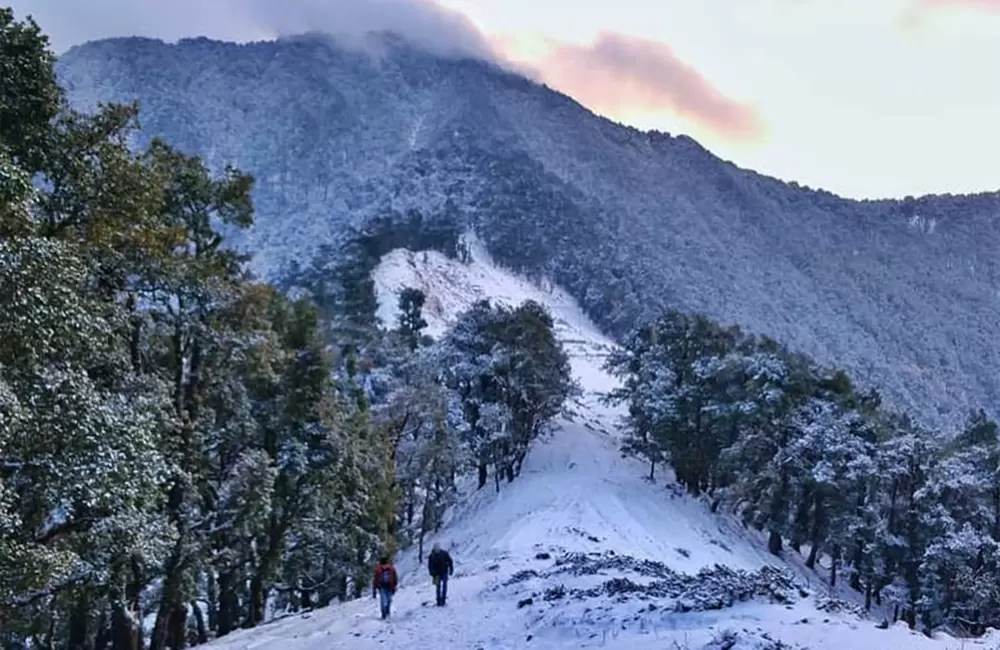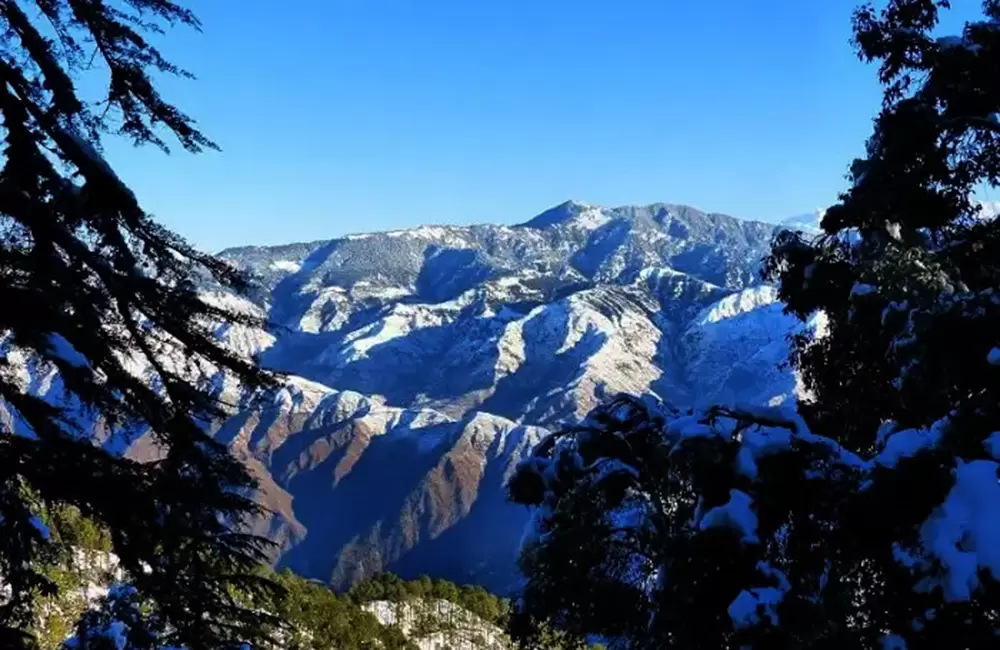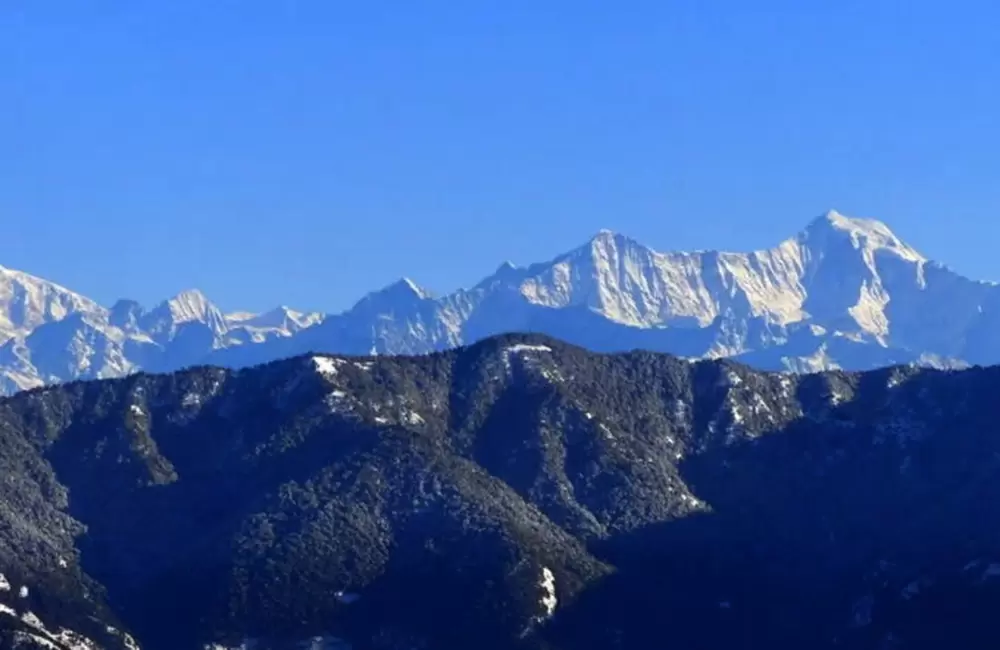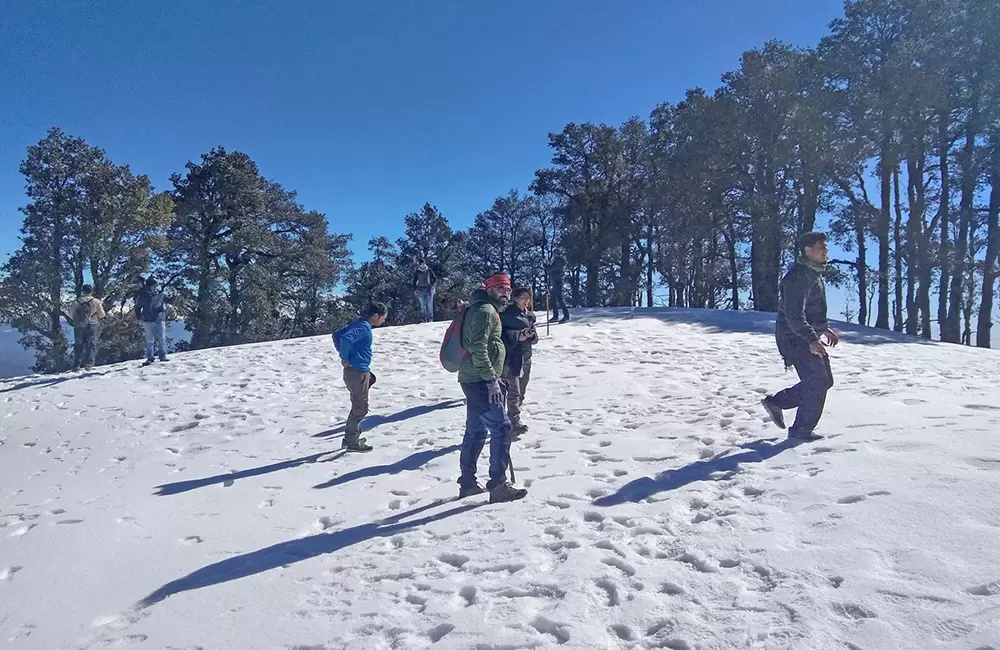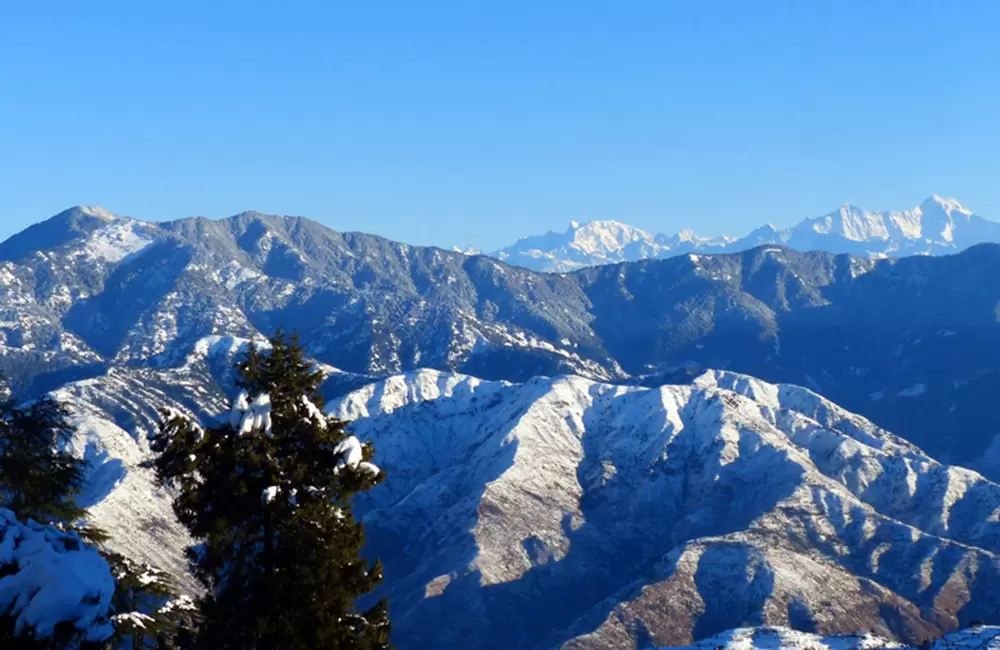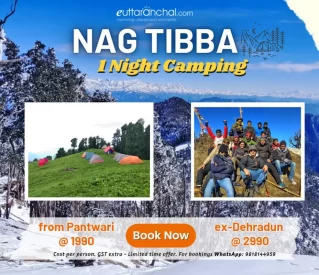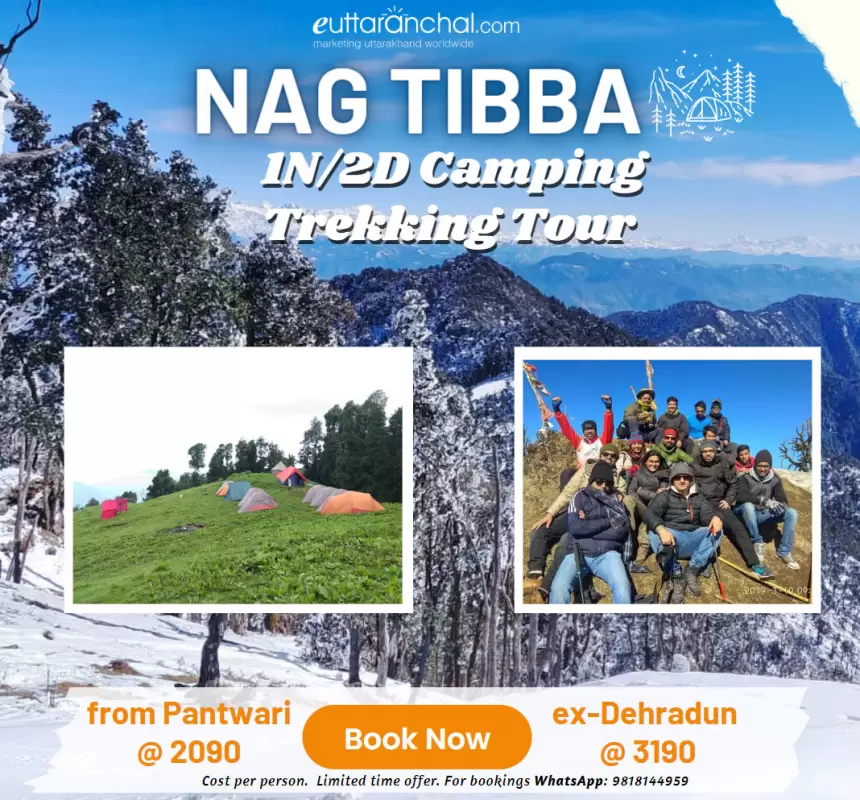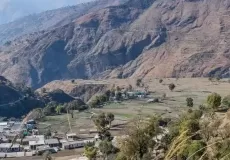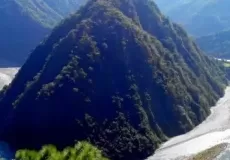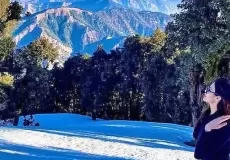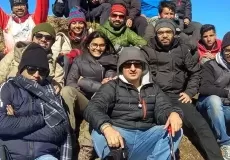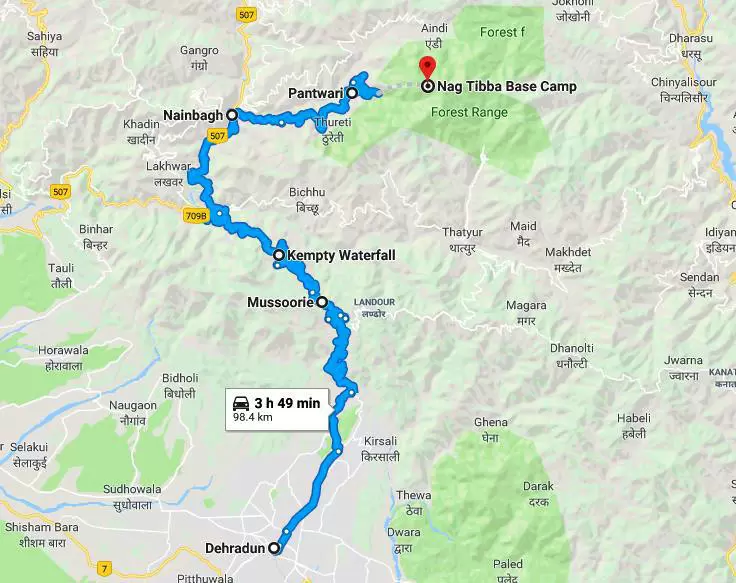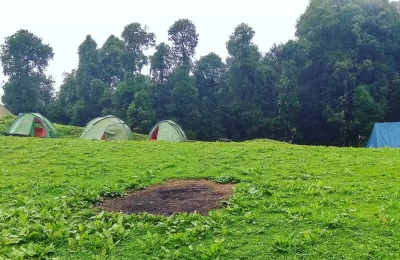Nag Tibba Trekking Guide
It is one of the best weekend treks that can be commenced by the beginners as well as experienced trekkers. A small temple is enshrined atop the hill, from where one can have a panoramic view of the entire Banderpunch ranges of the Great Indian Himalayas towards the Yamunotri side.
Nagtibba is a perfect place for camping during spring and summers and one of the most suitable trek for winters, when most of the treks are closed due to heavy snow. Due to its easy access it is one of most popular weekend treks in India.
Why Visit Nag Tibba Trek?
Nag Tibba is located at an altitude of 3025 mts and attracts thousands of tourists every year. Nagtibba offers majestic scenic beauty and a good trek for adventure lovers. Nag Tibba experience a salubrious weather throughout the year and is one of the best places to camp.
This comforting Nag Tibba trek offers spellbinding views of the massif peaks of Banderpunch, Swargarohini, Srikanth, Gangotri group of peaks, Black Peak, Kedarnath peak in the north, Doon Valley and the snow-shrouded peaks of Chanabang.
The Nag Tibba trek route is a circular trek, at some places, you’ll see a completely contrasting landscape having the dense mixed forests of Oak, Rhododendrons, Cedar and Alpine. The trekkers can camp, indulge in bird watching and savour the beauty of the meandering meadows and thick jungles.
- Weekend Trek: It is an Ideal weekend trek from Delhi and Dehradun. It is a trekking destination which could be done in 2-3 days starting from Delhi.
- Easy and Short Trek: It is one of the easiest trek and best suitable for beginners.
- Complete Trek: Offers jungle trail, Himalayan views, Meadows, waterfalls, snow during winter
- Safety: One of the safest trek, as being close to Mussoorie and Dehradun, with no rivers for floods or does not have any history of landslides.
Nag Tibba Trekking Routes
There are 3 trekking routes which are used to reach the summit of Nag Tibba. The details of the trek route is given below.
Trek Route 1: From Devalsari Village (13 kms)
The trek to Nag Tibba starts from Devalsari (13 kms) where one can stay Foresh Guest House by taking permission from the Mussoorie Forest Office. You can trek further for 3 kms to Nag tibba top which offers a breathtaking view of the Himalayas. The route goes through the thick deodar forest and reaches to the remote place with almost no habitation.
Trek Route 2: From Panthwari Village (8 Kms)
This is the most used route for trekkers to reach Nag Tibba base camp and summit. Pantwari village is 50 Kms by road from Mussoorie and 85 Kms from Dehradun. It is one the shortest route to reach Nag Tibba (just 8 Kms) from Panthwari village. Though the route is is little complicated and requires a guide.
Trek route 3: From Aunter (via Thatyur)
The motorable route via Thatyur goes all the way up near bridle path near Aunter. From here you walk up to the ridge top to Aunter, from here the route is quite straight with few slopes.
Check: Complete details of How to reach Nag Tibba
Best Suggested Nag Tibba Trek Itinerary
Day 1: Dehradun to Pantwari village drive and trek to Nag Tibba Temple
Day 2: Nag Tibba Temple to Nag Tibba top and return to Nag tibba base camp.
Day 3: Trek down to Pantwari Village and drive to Dehradun.
Nag Tibba Travel News
22 Feb 2025
Rain in Mussoorie, Snowfall in Dhanaulti Brings Temperature Dip
Light snowfall has been recorded in popular tourist spots around Mussoorie, including Dhanaulti, Nag Tibba, Lal Tibba, Khapri Tibba, and Surkanda Devi, along with other high-altitude areas. Tourists and locals are delighting in the winter spectacle, as the fresh snow transforms the region into a picturesque winter wonderland.
Staying in Nag Tibba
Nag Tibba peak doesn’t have any accommodation options and trekkers have to camp at Nag Tibba Base Camp to stay the night. Travelers usually bring their own camping equipments or are supplied by the trek operators. One can find few budget guesthouses at Devalsari or Pantwari depending on which trek route is taken.
However there is one Forest Rest House at the base camp of Nag Tibba Trek, one can stay over there by taking permission from Mussoorie Forest Office. The forest building is a four-way intersection with - a trail to Pantwari, another to Taal and on to Deolsari village, the third to Jhandi Top and the fourth to Digon Thatch.
Nag Tibba Food Guide
There is no food stall or even a tea stall at this elevation. Trekkers usually bring their own food supplies. If you are trekking with a group, it is advisable to find a local cook to travel with you so he can prepare meal for you when you halt and set up camp for the night. Also, carry some packaged food with you as a light snack for the route.
Mythology about Nag Tibba
The first name Nag refers to 'snake' and Tibba refers to 'hill or peak' in the local language. According to the religious beliefs of the local populace, Nag Tibba is the abode of ‘Nag Devta’, a Hindu mythological character that is worshiped by the devotees. Local villagers come here to offer their prayers to the Nag Devta for the protection of their cattle.
Best Time for Nat Tibba Trek
For those planning to embark on the Nag Tibba Trek, the optimal periods are the summer months, spanning from April to June, and the winter months, extending from October to December. For enthusiasts seeking the enchantment of snowfall or snow trekking, the prime months to visit Nag Tibba are January to March.
Q: Is Nag Tibba trek good for beginners and what is the difficulty level?
A: Yes, it is a perfect trek for the beginners. Trekking at Nagtibba is not difficult can be done easily by first time trekkers.
Q: What is the best time for Nag Tibba trek?
A: The best time to trek to Nag Tibba is February to mid-June, and mid-September to end-November. If you want an easy snow trek then from Last week of December to March is good time. You can also experience snowfall in Nag Tibba in winters. This is is an easy trek and the best weekend break to revitalize you.
Q: Will there be mobile connectivity?
A: Mobile connectivity will be very low and no Internet services. You will not have any mobile signals at the Nag Tibba Summit top. However, on the way, you can get some broken signals of some network providers. Make sure to make all important call till Mussoorie, after that mobile network is week.
Q: What is the total trekking distance for Nag Tibba Trek from Pantwari Village?
A: The Nag Tibba trek is around 8 kms from Pantwari, which makes the total trekking distance of 16 kms for the route Pantwari - Nag Tibba Base Camp - Nag Tibba Summit - Pantwari
Q: What is height of Nag Tibba?
A: The Nag Tibba height (altitude) is around 9915 feet (or 3025 mts). It is one of highest peak in Mussoorie region.
Read More: Nag Tibba Questions Asked by Travellers
Nag Tibba Mention in the Book: The trek through Nag Tibba Range, finds mention in the book Seven Years in Tibet, which chronicles the journey of mountaineers, Heinrich Harrer, Peter Aufschnaiter in May 1944, towards Tibet. It is also mentioned in the Jon Martin, 1979 Handbook: Your Handbook to Hiking around Mussoorie
Important Note: water is scarce along the route and it is recommend to carry enough water for the trek.
Nag Tibba Weather
Check out the Nag Tibba weather report for April
Nag Tibba Weather in April
The minimun and maximum temperature in April in Nag Tibba is 1°C and 11°C respectively. The weather is generally pleasant and clear in April and you would feel cold throughout the day. Light Woolen clothes are recommended for Nag Tibba in April.
What is Nag Tibba famous for?
Nag Tibba is famous among tourist as Trekking, Hiking, Weekend Trek, Easy Trek, Garhwal Trek, Beginners Trekking, Camping, Winter Trek.
Nag Tibba is recommended destination for Corporates, Couples, Family and Kids, Foreigners, Groups, Solo.
Nag Tibba is popular destination for following activities/ interests - Adventure, Camping, Christmas and New Year, Emerging Destinations, Hiking, Meadows, Trekking, Weekend Getaway, Winter Treks.
